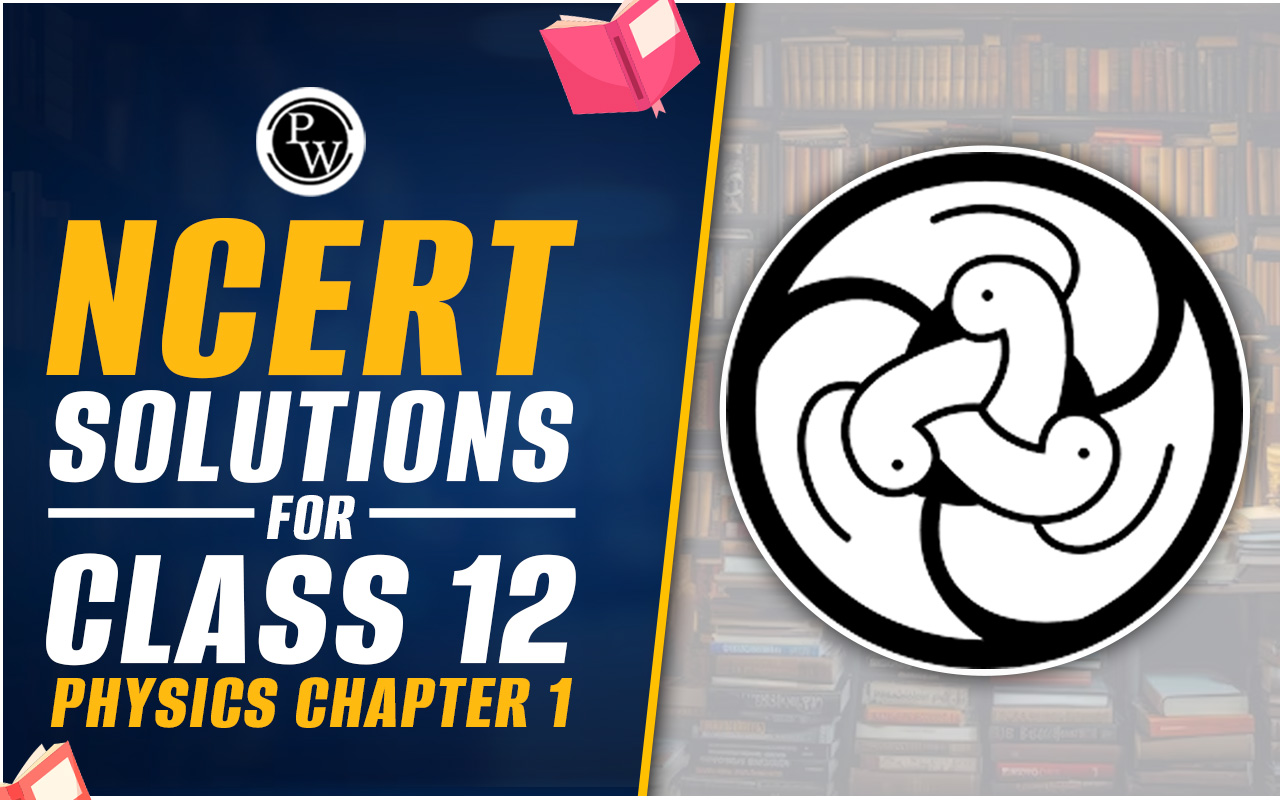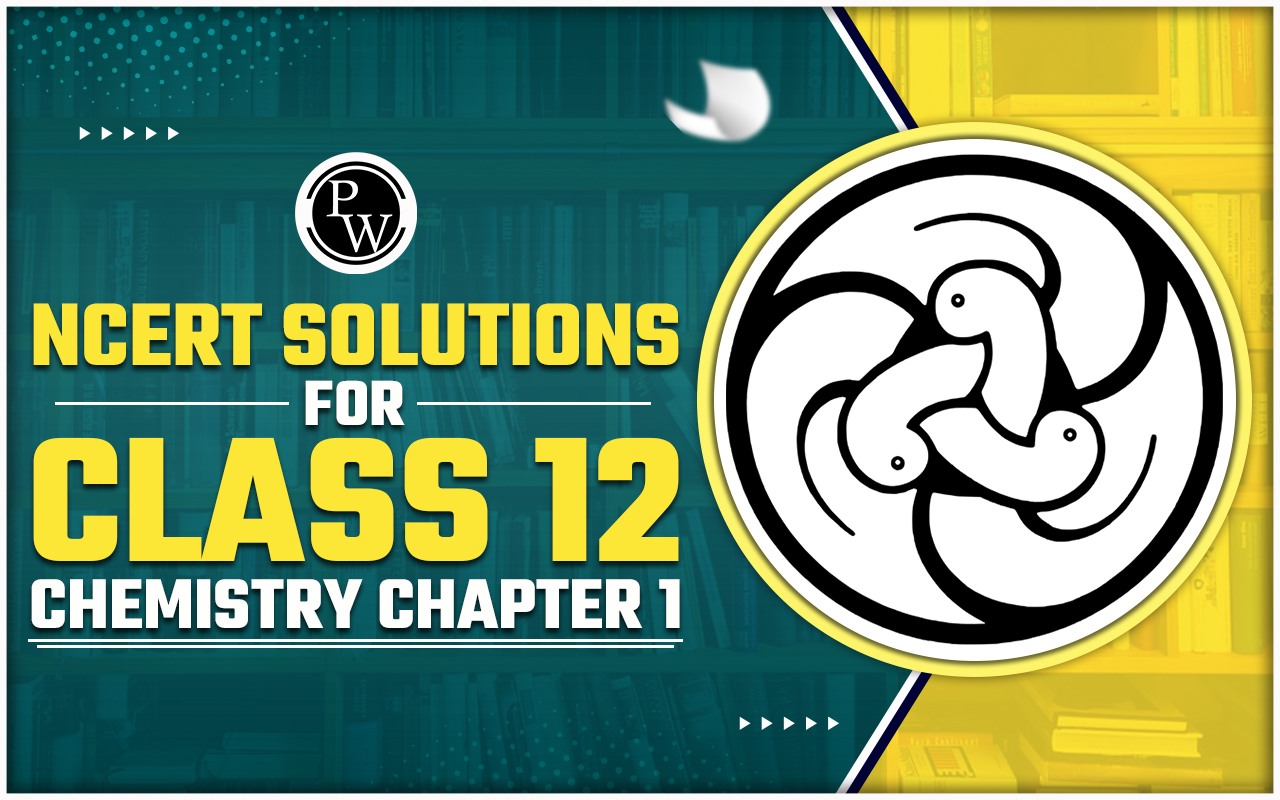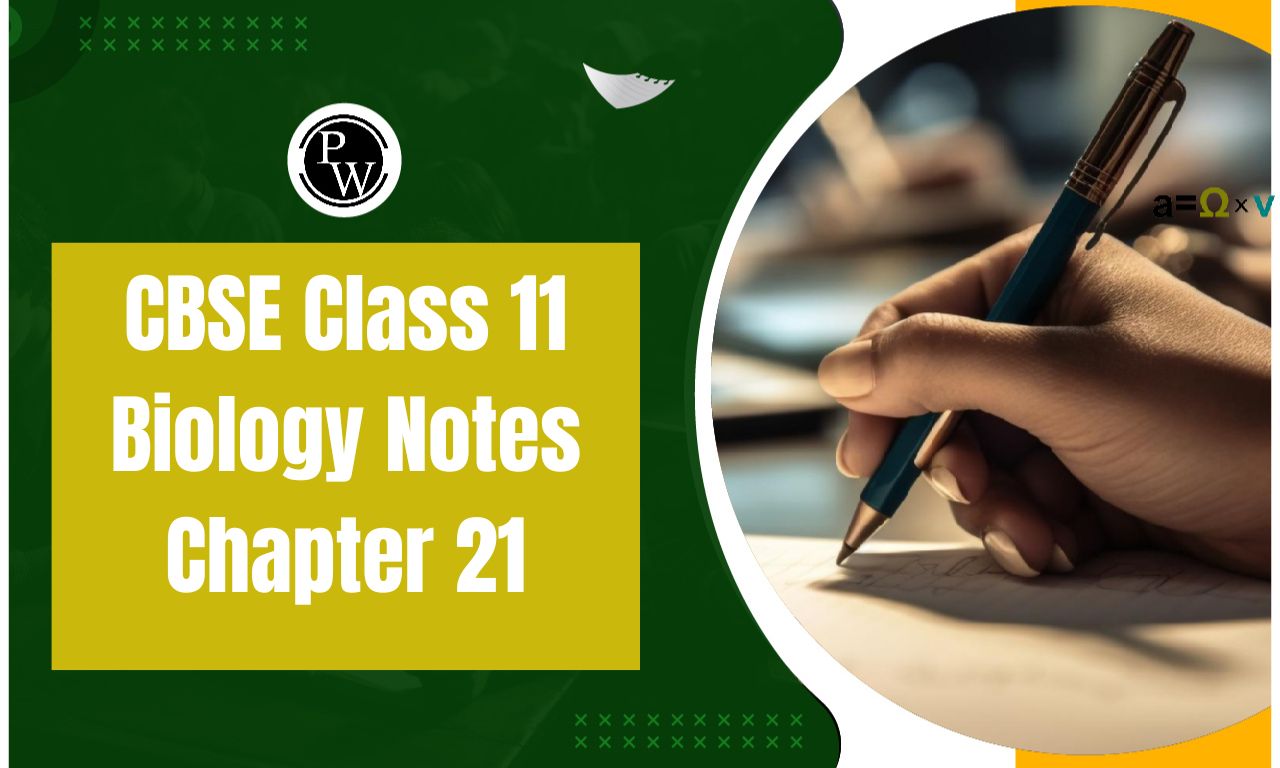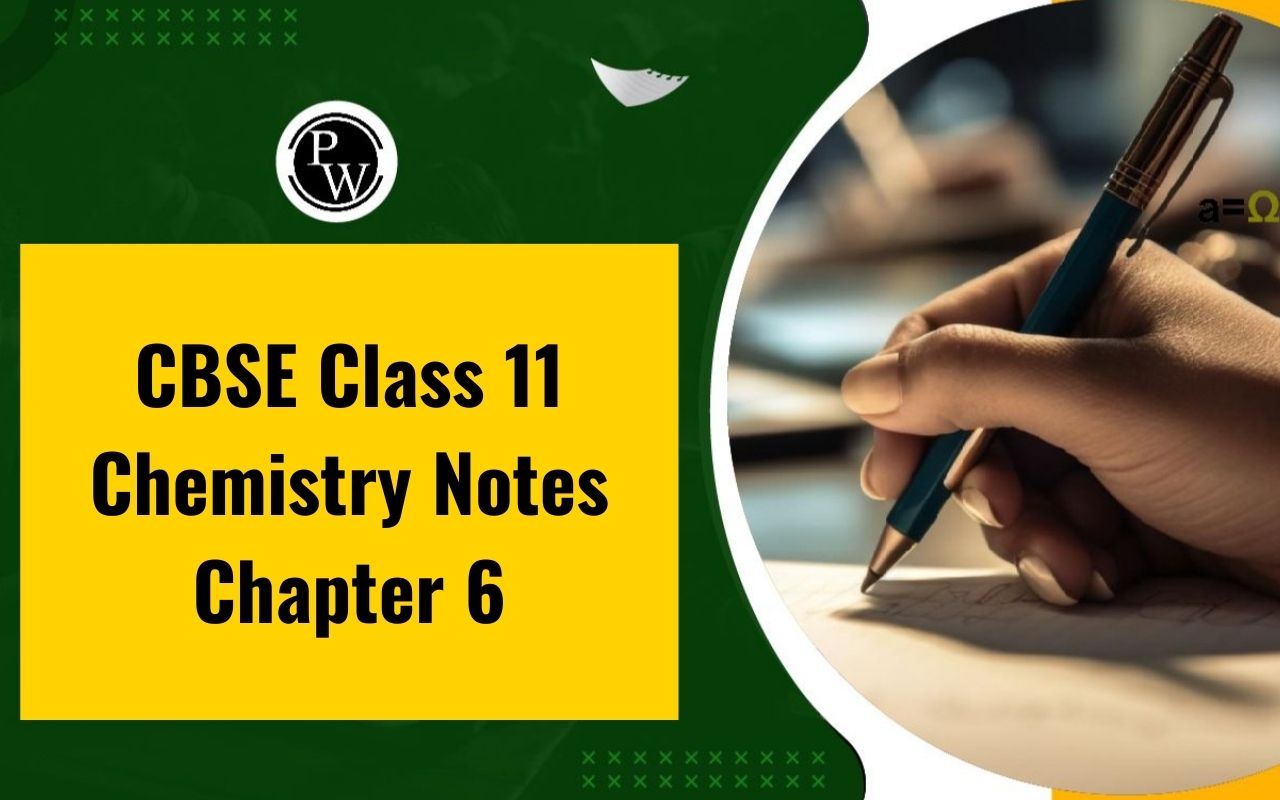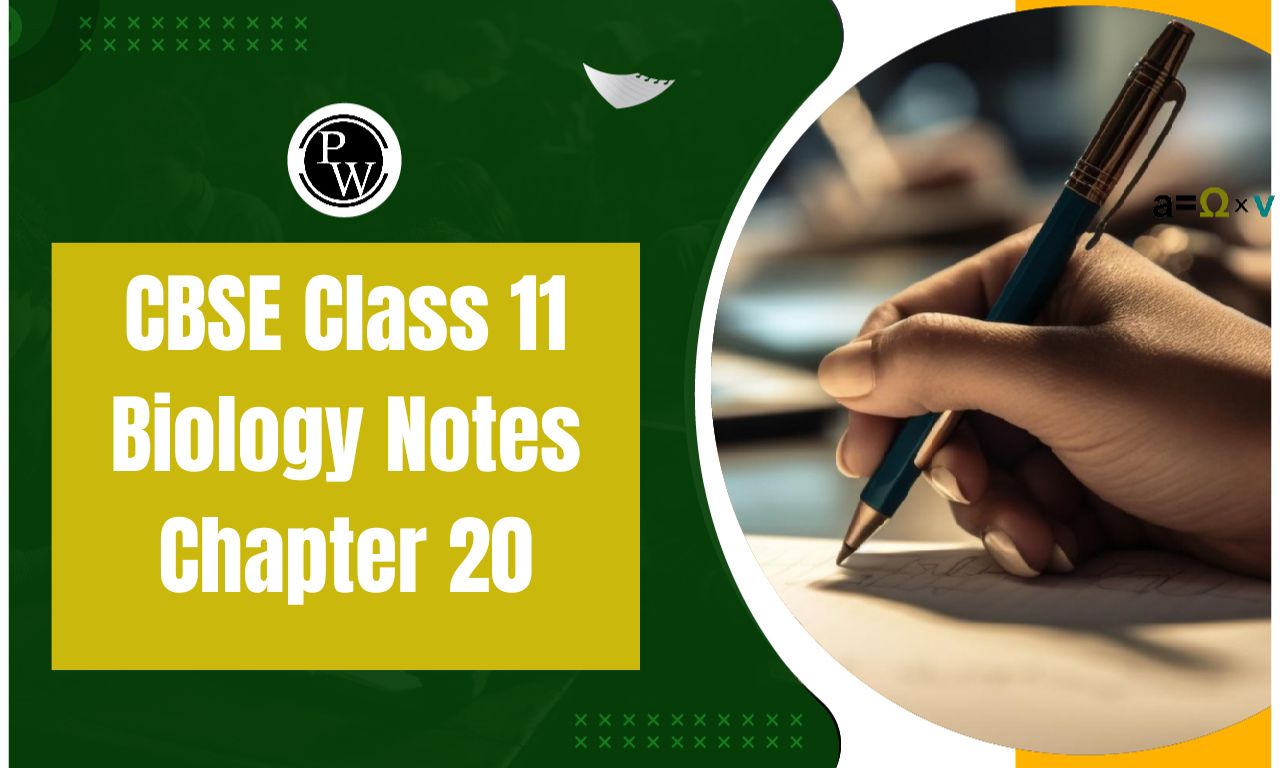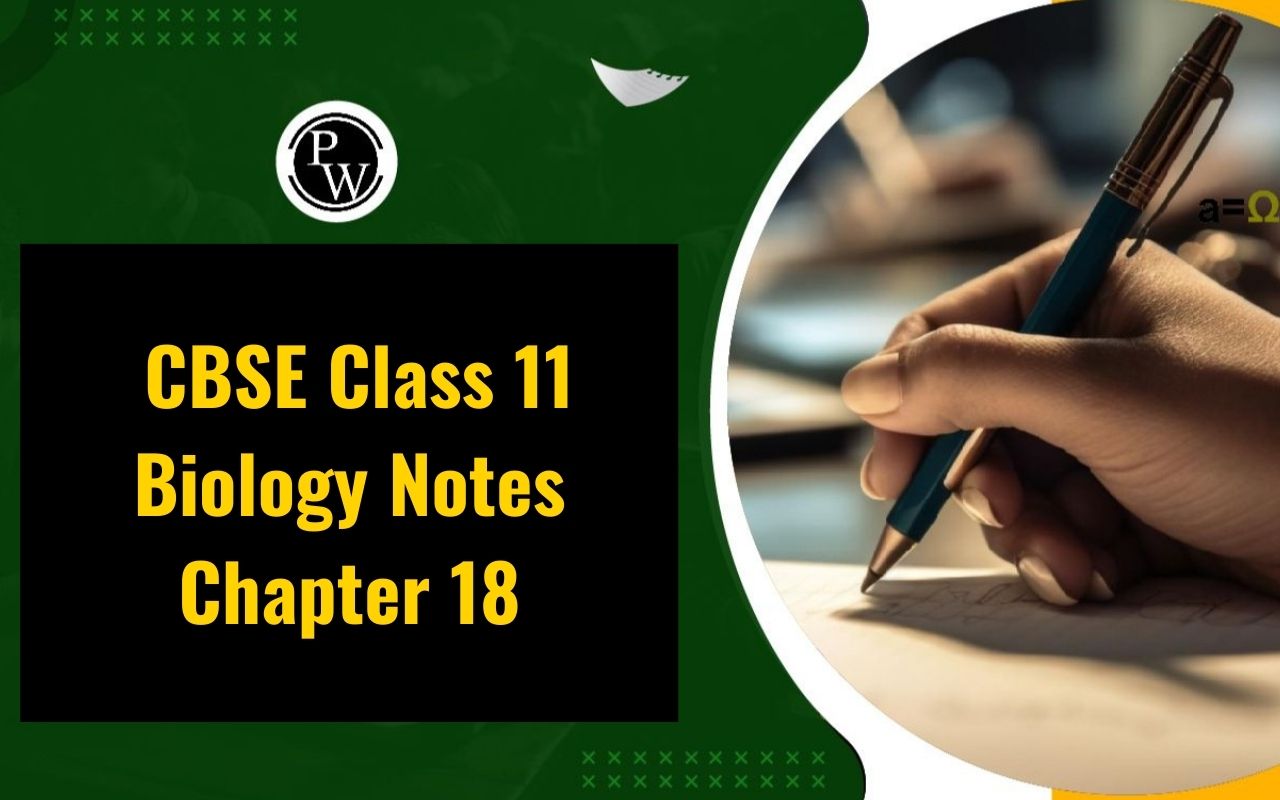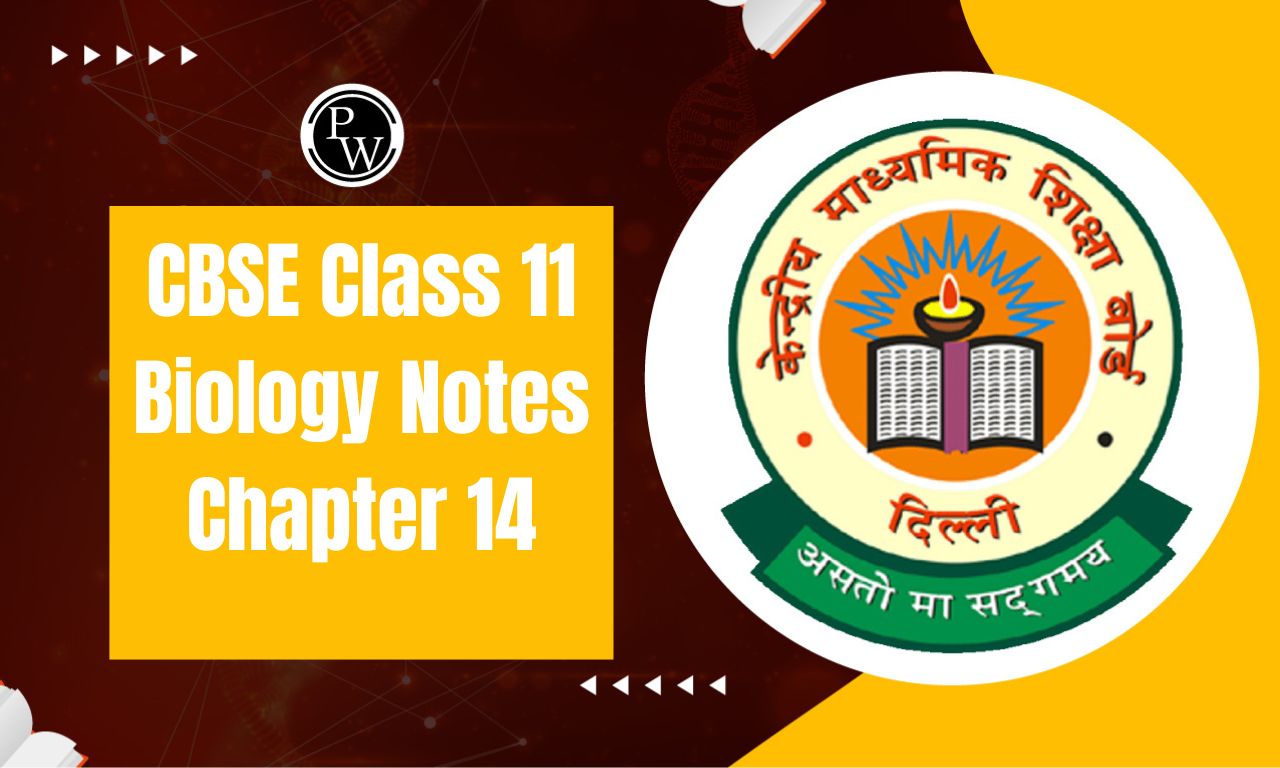
NCERT Solutions For Class 12 Physics Chapter 12 Atoms
NCERT Solutions For Class 12 Physics Chapter 12 Atoms is prepared by our senior and renowned teachers of Physics Wallah primary focus while solving these questions of class-12 in NCERT textbook, also do read theory of this Chapter 12 Atoms while going before solving the NCERT questions. You can download and share NCERT Solutions of Class 12 Physics from Physics Wallah.| NCERT Solutions For Class 12 Physics | ||
|---|---|---|
| NCERT Solutions for class 12 Physics Chapter 1 | NCERT Solutions for class 12 Physics Chapter 2 | NCERT Solutions for class 12 Physics Chapter 3 |
NCERT Solutions For Class 12 Physics Chapter 12 Overview
When reading any chapter, it is important that students gain a sense of comprehension. Every major topic is covered in chapter 12 of the NCERT Solutions Class 12 Science textbook. Students are advised to read through each topic in detail in order to fully understand the concepts offered in this chapter and make appropriate use of the provided answers. Physics Wallah's professors have developed these solutions to help in understanding the concepts covered in this chapter. Following their review and practice of these answers, the goal is for students to be able to pass exams.NCERT Solutions For Class 12 Physics Chapter 12 PDF
Our experts at physics wallah have created the NCERT Solutions For Class 12 Physics Chapter 12 to help students in understanding the chapter better. These solutions will help students to clear their concepts better in a simple language. Below we have mentioned the link for the NCERT Solutions For Class 12 Physics Chapter 12-NCERT Solutions Class 12 Physics Chapter 12 PDF Download Link
NCERT Solutions For Class 12 Physics Chapter 12
Answer The Following Question Answer NCERT Solutions For Class 12 Physics Chapter 12 Atoms:
Question 1. Choose the correct alternative from the clues given at the end of the each statement: (a) Size of an atom in Rutherford’s model is _________ the size of an atom compared to of Thomson’s model. (Less than, Greater than, no different than) (b) Even in the case of stable equilibrium _________ electrons experience a net force, though _______ electrons do not. [Rutherford’s model, Thomson’s model] (c) _____ is a showcase of a model of an atom which is bound to fail. [Rutherford’s model, Thomson’s model] (d) Mass distribution is uniform in __________ but highly irregular in ___________ . [Rutherford’s model, Thomson’s model, both the models] (e) _____ states that a larger portion of the mass of an atom is contributed by the positively charged part. Solution : (a) Size of an atom in Rutherford’s model is the same as the size of an atom compared to of Thomson’s model. (b) Even in the case of stable equilibrium Rutherford’s model electrons experience a net force, though Thomson’s model electrons do not. (c) Rutherford’s model is a show cases a model of an atom which is bound to fail. (d) Mass distribution is uniform in Thomson’s model but highly irregular in Rutherford’s model. (e) Both of the models states that a larger portion of the mass of an atom is contributed by the positively charged part. Question 2. Suppose you are given a chance to repeat the alpha-particle scattering experiment using a thin sheet of solid hydrogen in place of the gold foil. (Hydrogen is a solid at temperatures below 14 K.) What results do you expect? Solution : In the alpha-particle scattering experiment, if a thin sheet of solid hydrogen is used in place of a gold foil, then the scattering angle would not be large enough. This is because the mass of hydrogen (1.67 × 10−27 kg) is less than the mass of incident α−particles (6.64 × 10−27 kg). Thus, the mass of the scattering particle is more than the target nucleus (hydrogen). As a result, the α−particles would not bounce back if solid hydrogen is used in the α-particle scattering experiment. Question 3. What is the shortest wavelength present in the Paschen series of spectral lines? Solution : Rydberg’s formula is given as: Where,
h = Planck’s constant = 6.6 × 10−34 Js
c = Speed of light = 3 × 108 m/s
(n1 and n2 are integers)
The shortest wavelength present in the Paschen series of the spectral lines is given for values n1 = 3 and n2 = ∞.
Where,
h = Planck’s constant = 6.6 × 10−34 Js
c = Speed of light = 3 × 108 m/s
(n1 and n2 are integers)
The shortest wavelength present in the Paschen series of the spectral lines is given for values n1 = 3 and n2 = ∞.
 Question
4. A difference of 2.3 eV separates two energy levels in an atom. What is the frequency of radiation emitted when the atom makes a transition from the upper level to the lower level?
Solution :
Separation of two energy levels in an atom,
E = 2.3 eV
= 2.3 × 1.6 × 10−19
= 3.68 × 10−19 J
Let ν be the frequency of radiation emitted when the atom transits from the upper level to the lower level.
We have the relation for energy as:
E = hv
Where,
h = Planck’s constant
Question
4. A difference of 2.3 eV separates two energy levels in an atom. What is the frequency of radiation emitted when the atom makes a transition from the upper level to the lower level?
Solution :
Separation of two energy levels in an atom,
E = 2.3 eV
= 2.3 × 1.6 × 10−19
= 3.68 × 10−19 J
Let ν be the frequency of radiation emitted when the atom transits from the upper level to the lower level.
We have the relation for energy as:
E = hv
Where,
h = Planck’s constant

 Hence, the frequency of the radiation is 5.6 × 1014 Hz.
Question
5. The ground state energy of hydrogen atom is −13.6 eV. What are the kinetic and potential energies of the electron in this state?
Solution :
Ground state energy of hydrogen atom, E = − 13.6 eV
This is the total energy of a hydrogen atom. Kinetic energy is equal to the negative of the total energy.
Kinetic energy = − E = − (− 13.6) = 13.6 eV
Potential energy is equal to the negative of two times of kinetic energy.
Potential energy = − 2 × (13.6) = − 27 .2 eV
Question
6. A hydrogen atom initially in the ground level absorbs a photon, which excites it to the n = 4 level. Determine the wavelength and frequency of the photon.
Solution :
For ground level, n1 = 1
Let E1 be the energy of this level. It is known that E1 is related with n1 as:
Hence, the frequency of the radiation is 5.6 × 1014 Hz.
Question
5. The ground state energy of hydrogen atom is −13.6 eV. What are the kinetic and potential energies of the electron in this state?
Solution :
Ground state energy of hydrogen atom, E = − 13.6 eV
This is the total energy of a hydrogen atom. Kinetic energy is equal to the negative of the total energy.
Kinetic energy = − E = − (− 13.6) = 13.6 eV
Potential energy is equal to the negative of two times of kinetic energy.
Potential energy = − 2 × (13.6) = − 27 .2 eV
Question
6. A hydrogen atom initially in the ground level absorbs a photon, which excites it to the n = 4 level. Determine the wavelength and frequency of the photon.
Solution :
For ground level, n1 = 1
Let E1 be the energy of this level. It is known that E1 is related with n1 as:
 The atom is excited to a higher level, n2 = 4.
Let E2 be the energy of this level.
The atom is excited to a higher level, n2 = 4.
Let E2 be the energy of this level.
 The amount of energy absorbed by the photon is given as:
E = E2 − E1
The amount of energy absorbed by the photon is given as:
E = E2 − E1
 For a photon of wavelengthλ, the expression of energy is written as:
For a photon of wavelengthλ, the expression of energy is written as:
 Where,
h = Planck’s constant = 6.6 × 10−34 Js
c = Speed of light = 3 × 108 m/s
Where,
h = Planck’s constant = 6.6 × 10−34 Js
c = Speed of light = 3 × 108 m/s
 And, frequency of a photon is given by the relation,
And, frequency of a photon is given by the relation,
 Hence, the wavelength of the photon is 97 nm while the frequency is 3.1 × 1015 Hz.
Question
7.(a) Using the Bohr’s model calculate the speed of the electron in a hydrogen atom in the n = 1, 2, and 3 levels. (b) Calculate the orbital period in each of these levels.
Solution :
(a) Let ν1 be the orbital speed of the electron in a hydrogen atom in the ground state level, n1 = 1. For charge (e) of an electron, ν1 is given by the relation,
Hence, the wavelength of the photon is 97 nm while the frequency is 3.1 × 1015 Hz.
Question
7.(a) Using the Bohr’s model calculate the speed of the electron in a hydrogen atom in the n = 1, 2, and 3 levels. (b) Calculate the orbital period in each of these levels.
Solution :
(a) Let ν1 be the orbital speed of the electron in a hydrogen atom in the ground state level, n1 = 1. For charge (e) of an electron, ν1 is given by the relation,
 Where,
e = 1.6 × 10−19 C
∈0 = Permittivity of free space = 8.85 × 10−12 N−1 C2 m−2
h = Planck’s constant = 6.62 × 10−34 Js
Where,
e = 1.6 × 10−19 C
∈0 = Permittivity of free space = 8.85 × 10−12 N−1 C2 m−2
h = Planck’s constant = 6.62 × 10−34 Js
 For level n2 = 2, we can write the relation for the corresponding orbital speed as:
For level n2 = 2, we can write the relation for the corresponding orbital speed as:
 And, for n3 = 3, we can write the relation for the corresponding orbital speed as:
And, for n3 = 3, we can write the relation for the corresponding orbital speed as:
 Hence, the speed of the electron in a hydrogen atom in n = 1, n=2, and n=3 is 2.18 × 106 m/s, 1.09 × 106 m/s, 7.27 × 105 m/s respectively.
(b) Let T1 be the orbital period of the electron when it is in level n1 = 1.
Orbital period is related to orbital speed as:
Hence, the speed of the electron in a hydrogen atom in n = 1, n=2, and n=3 is 2.18 × 106 m/s, 1.09 × 106 m/s, 7.27 × 105 m/s respectively.
(b) Let T1 be the orbital period of the electron when it is in level n1 = 1.
Orbital period is related to orbital speed as:
 Where,
r1 = Radius of the orbit
Where,
r1 = Radius of the orbit
 h = Planck’s constant = 6.62 × 10−34 Js
e = Charge on an electron = 1.6 × 10−19 C
∈0 = Permittivity of free space = 8.85 × 10−12 N−1 C2 m−2
m = Mass of an electron = 9.1 × 10−31 kg
h = Planck’s constant = 6.62 × 10−34 Js
e = Charge on an electron = 1.6 × 10−19 C
∈0 = Permittivity of free space = 8.85 × 10−12 N−1 C2 m−2
m = Mass of an electron = 9.1 × 10−31 kg
 For level n2 = 2, we can write the period as:
For level n2 = 2, we can write the period as:
 Where,
r2 = Radius of the electron in n2 = 2
Where,
r2 = Radius of the electron in n2 = 2

 And, for level n3 = 3, we can write the period as:
And, for level n3 = 3, we can write the period as:
 Where,
r3 = Radius of the electron in n3 = 3
Where,
r3 = Radius of the electron in n3 = 3

 Hence, the orbital period in each of these levels is 1.52 × 10−16 s, 1.22 × 10−15 s, and 4.12 × 10−15 s respectively.
Question
8. The radius of the innermost electron orbit of a hydrogen atom is 5.3 ×10−11 m. What are the radii of the n = 2 and n =3 orbits?
Solution :
The radius of the innermost orbit of a hydrogen atom, r1 = 5.3 × 10−11 m.
Let r2 be the radius of the orbit at n = 2. It is related to the radius of the innermost orbit as:
Hence, the orbital period in each of these levels is 1.52 × 10−16 s, 1.22 × 10−15 s, and 4.12 × 10−15 s respectively.
Question
8. The radius of the innermost electron orbit of a hydrogen atom is 5.3 ×10−11 m. What are the radii of the n = 2 and n =3 orbits?
Solution :
The radius of the innermost orbit of a hydrogen atom, r1 = 5.3 × 10−11 m.
Let r2 be the radius of the orbit at n = 2. It is related to the radius of the innermost orbit as:
 For n = 3, we can write the corresponding electron radius as:
For n = 3, we can write the corresponding electron radius as:
 Hence, the radii of an electron for n = 2 and n = 3 orbits are 2.12 × 10−10 m and 4.77 × 10−10 m respectively.
Question
9. A 12.5 eV electron beam is used to bombard gaseous hydrogen at room temperature. What series of wavelengths will be emitted?
Solution :
It is given that the energy of the electron beam used to bombard gaseous hydrogen at room temperature is 12.5 eV. Also, the energy of the gaseous hydrogen in its ground state at room temperature is −13.6 eV.
When gaseous hydrogen is bombarded with an electron beam, the energy of the gaseous hydrogen becomes −13.6 + 12.5 eV i.e., −1.1 eV.
Orbital energy is related to orbit level (n) as:
Hence, the radii of an electron for n = 2 and n = 3 orbits are 2.12 × 10−10 m and 4.77 × 10−10 m respectively.
Question
9. A 12.5 eV electron beam is used to bombard gaseous hydrogen at room temperature. What series of wavelengths will be emitted?
Solution :
It is given that the energy of the electron beam used to bombard gaseous hydrogen at room temperature is 12.5 eV. Also, the energy of the gaseous hydrogen in its ground state at room temperature is −13.6 eV.
When gaseous hydrogen is bombarded with an electron beam, the energy of the gaseous hydrogen becomes −13.6 + 12.5 eV i.e., −1.1 eV.
Orbital energy is related to orbit level (n) as:
 For n = 3,
For n = 3,
 This energy is approximately equal to the energy of gaseous hydrogen. It can be concluded that the electron has jumped from n = 1 to n = 3 level.
During its de-excitation, the electrons can jump from n = 3 to n = 1 directly, which forms a line of the Lyman series of the hydrogen spectrum.
We have the relation for wave number for Lyman series as:
This energy is approximately equal to the energy of gaseous hydrogen. It can be concluded that the electron has jumped from n = 1 to n = 3 level.
During its de-excitation, the electrons can jump from n = 3 to n = 1 directly, which forms a line of the Lyman series of the hydrogen spectrum.
We have the relation for wave number for Lyman series as:
 Where,
Ry = Rydberg constant = 1.097 × 107 m−1
λ= Wavelength of radiation emitted by the transition of the electron
For n = 3, we can obtain λas:
Where,
Ry = Rydberg constant = 1.097 × 107 m−1
λ= Wavelength of radiation emitted by the transition of the electron
For n = 3, we can obtain λas:
 If the electron jumps from n = 2 to n = 1, then the wavelength of the radiation is given as:
If the electron jumps from n = 2 to n = 1, then the wavelength of the radiation is given as:
 If the transition takes place from n = 3 to n = 2, then the wavelength of the radiation is given as:
If the transition takes place from n = 3 to n = 2, then the wavelength of the radiation is given as:
 This radiation corresponds to the Balmer series of the hydrogen spectrum.
Hence, in Lyman series, two wavelengths i.e., 102.5 nm and 121.5 nm are emitted. And in the Balmer series, one wavelength i.e., 656.33 nm is emitted.
Question
10. In accordance with the Bohr’s model, find the quantum number that characterises the earth’s revolution around the sun in an orbit of radius 1.5 × 1011 m with orbital speed 3 × 104 m/s. (Mass of earth = 6.0 × 1024 kg.)
Solution :
Radius of the orbit of the Earth around the Sun, r = 1.5 × 1011 m
Orbital speed of the Earth, ν = 3 × 104 m/s
Mass of the Earth, m = 6.0 × 1024 kg
According to Bohr’s model, angular momentum is quantized and given as:
This radiation corresponds to the Balmer series of the hydrogen spectrum.
Hence, in Lyman series, two wavelengths i.e., 102.5 nm and 121.5 nm are emitted. And in the Balmer series, one wavelength i.e., 656.33 nm is emitted.
Question
10. In accordance with the Bohr’s model, find the quantum number that characterises the earth’s revolution around the sun in an orbit of radius 1.5 × 1011 m with orbital speed 3 × 104 m/s. (Mass of earth = 6.0 × 1024 kg.)
Solution :
Radius of the orbit of the Earth around the Sun, r = 1.5 × 1011 m
Orbital speed of the Earth, ν = 3 × 104 m/s
Mass of the Earth, m = 6.0 × 1024 kg
According to Bohr’s model, angular momentum is quantized and given as:
 Where,
h = Planck’s constant = 6.62 × 10−34 Js
n = Quantum number
Where,
h = Planck’s constant = 6.62 × 10−34 Js
n = Quantum number
 Hence, the quanta number that characterizes the Earth’ revolution is 2.6 × 1074.
Question
11. Answer the following questions, which help you understand the difference between Thomson’s model and Rutherford’s model better.
(a) Is the average angle of deflection of α-particles by a thin gold foil predicted by Thomson’s model much less, about the same, or much greater than that predicted by Rutherford’s model?
(b) Is the probability of backward scattering (i.e., scattering of α-particles at angles greater than 90°) predicted by Thomson’s model much less, about the same, or much greater than that predicted by Rutherford’s model?
(c) Keeping other factors fixed, it is found experimentally that for small thickness t, the number of α-particles scattered at moderate angles is proportional to t. What clue does this linear dependence on t provide?
(d) In which model is it completely wrong to ignore multiple scattering for the calculation of average angle of scattering of α-particles by a thin foil?
Solution :
(a) about the same
The average angle of deflection of α-particles by a thin gold foil predicted by Thomson’s model is about the same size as predicted by Rutherford’s model. This is because the average angle was taken in both models.
(b) much less
The probability of scattering of α-particles at angles greater than 90° predicted by Thomson’s model is much less than that predicted by Rutherford’s model.
(c) Scattering is mainly due to single collisions. The chance of a single collision increases linearly with the number of target atoms. Since the number of target atoms increase with an increase in thickness, the collision probability depends linearly on the thickness of the target.
(d) Thomson’s model
It is wrong to ignore multiple scattering in Thomson’s model for the calculation of average angle of scattering of α−particles by a thin foil. This is because a single collision causes very little deflection in this model. Hence, the observed average scattering angle can be explained only by considering multiple scattering.
Question
12. The gravitational attraction between electron and proton in a hydrogen atom is weaker than the coulomb attraction by a factor of about 10−40. An alternative way of looking at this fact is to estimate the radius of the first Bohr orbit of a hydrogen atom if the electron and proton were bound by gravitational attraction. You will find the answer interesting.
Solution :
Radius of the first Bohr orbit is given by the relation,
Hence, the quanta number that characterizes the Earth’ revolution is 2.6 × 1074.
Question
11. Answer the following questions, which help you understand the difference between Thomson’s model and Rutherford’s model better.
(a) Is the average angle of deflection of α-particles by a thin gold foil predicted by Thomson’s model much less, about the same, or much greater than that predicted by Rutherford’s model?
(b) Is the probability of backward scattering (i.e., scattering of α-particles at angles greater than 90°) predicted by Thomson’s model much less, about the same, or much greater than that predicted by Rutherford’s model?
(c) Keeping other factors fixed, it is found experimentally that for small thickness t, the number of α-particles scattered at moderate angles is proportional to t. What clue does this linear dependence on t provide?
(d) In which model is it completely wrong to ignore multiple scattering for the calculation of average angle of scattering of α-particles by a thin foil?
Solution :
(a) about the same
The average angle of deflection of α-particles by a thin gold foil predicted by Thomson’s model is about the same size as predicted by Rutherford’s model. This is because the average angle was taken in both models.
(b) much less
The probability of scattering of α-particles at angles greater than 90° predicted by Thomson’s model is much less than that predicted by Rutherford’s model.
(c) Scattering is mainly due to single collisions. The chance of a single collision increases linearly with the number of target atoms. Since the number of target atoms increase with an increase in thickness, the collision probability depends linearly on the thickness of the target.
(d) Thomson’s model
It is wrong to ignore multiple scattering in Thomson’s model for the calculation of average angle of scattering of α−particles by a thin foil. This is because a single collision causes very little deflection in this model. Hence, the observed average scattering angle can be explained only by considering multiple scattering.
Question
12. The gravitational attraction between electron and proton in a hydrogen atom is weaker than the coulomb attraction by a factor of about 10−40. An alternative way of looking at this fact is to estimate the radius of the first Bohr orbit of a hydrogen atom if the electron and proton were bound by gravitational attraction. You will find the answer interesting.
Solution :
Radius of the first Bohr orbit is given by the relation,
 Where,
∈0 = Permittivity of free space
h = Planck’s constant = 6.63 × 10−34 Js
me = Mass of an electron = 9.1 × 10−31 kg
e = Charge of an electron = 1.9 × 10−19 C
mp = Mass of a proton = 1.67 × 10−27 kg
r = Distance between the electron and the proton
Coulomb attraction between an electron and a proton is given as:
Where,
∈0 = Permittivity of free space
h = Planck’s constant = 6.63 × 10−34 Js
me = Mass of an electron = 9.1 × 10−31 kg
e = Charge of an electron = 1.9 × 10−19 C
mp = Mass of a proton = 1.67 × 10−27 kg
r = Distance between the electron and the proton
Coulomb attraction between an electron and a proton is given as:
 Gravitational force of attraction between an electron and a proton is given as:
Gravitational force of attraction between an electron and a proton is given as:
 Where,
G = Gravitational constant = 6.67 × 10−11 N m2/kg2
If the electrostatic (Coulomb) force and the gravitational force between an electron and a proton are equal, then we can write:
∴FG = FC
Where,
G = Gravitational constant = 6.67 × 10−11 N m2/kg2
If the electrostatic (Coulomb) force and the gravitational force between an electron and a proton are equal, then we can write:
∴FG = FC
 Putting the value of equation (4) in equation (1), we get:
Putting the value of equation (4) in equation (1), we get:
 It is known that the universe is 156 billion light years wide or 1.5 × 1027 m wide. Hence, we can conclude that the radius of the first Bohr orbit is much greater than the estimated size of the whole universe.
Question
13. Obtain an expression for the frequency of radiation emitted when a hydrogen atom de-excites from level n to level (n−1). For large n, show that this frequency equals the classical frequency of revolution of the electron in the orbit.
Solution :
It is given that a hydrogen atom de-excites from an upper level (n) to a lower level (n−1).
We have the relation for energy (E1) of radiation at level n as:
It is known that the universe is 156 billion light years wide or 1.5 × 1027 m wide. Hence, we can conclude that the radius of the first Bohr orbit is much greater than the estimated size of the whole universe.
Question
13. Obtain an expression for the frequency of radiation emitted when a hydrogen atom de-excites from level n to level (n−1). For large n, show that this frequency equals the classical frequency of revolution of the electron in the orbit.
Solution :
It is given that a hydrogen atom de-excites from an upper level (n) to a lower level (n−1).
We have the relation for energy (E1) of radiation at level n as:
 Now, the relation for energy (E2) of radiation at level (n − 1) is givenas:
Now, the relation for energy (E2) of radiation at level (n − 1) is givenas:
 Energy (E) released as a result of de-excitation:
E = E2−E1
hν = E2 − E1 … (iii)
Where,
ν = Frequency of radiation emitted
Putting values from equations (i) and (ii) in equation (iii), we get:
Energy (E) released as a result of de-excitation:
E = E2−E1
hν = E2 − E1 … (iii)
Where,
ν = Frequency of radiation emitted
Putting values from equations (i) and (ii) in equation (iii), we get:
 For large n, we can write
For large n, we can write

 Classical relation of frequency of revolution of an electron is given as:
Classical relation of frequency of revolution of an electron is given as:
 Where,
Velocity of the electron in the nth orbit is given as:
Where,
Velocity of the electron in the nth orbit is given as:
 And, radius of the nth orbit is given as:
And, radius of the nth orbit is given as:
 Putting the values of equations (vi) and (vii) in equation (v), we get:
Putting the values of equations (vi) and (vii) in equation (v), we get:
 Hence, the frequency of radiation emitted by the hydrogen atom is equal to its classical orbital frequency.
Question
14. Classically, an electron can be in any orbit around the nucleus of an atom. Then what determines the typical atomic size? Why is an atom not, say, thousand times bigger than its typical size? The question had greatly puzzled Bohr before he arrived at his famous model of the atom that you have learnt in the text. To simulate what he might well have done before his discovery, let us play as follows with the basic constants of nature and see if we can get a quantity with the dimensions of length that is roughly equal to the known size of an atom (~ 10−10 m).
(a) Construct a quantity with the dimensions of length from the fundamental constants e, me, and c. Determine its numerical value.
(b) You will find that the length obtained in (a) is many orders of magnitude smaller than the atomic dimensions. Further, it involves c. But energies of atoms are mostly in non-relativistic domain where c is not expected to play any role. This is what may have suggested Bohr to discard c and look for ‘something else’ to get the right atomic size. Now, the Planck’s constant h had already made its appearance elsewhere. Bohr’s great insight lay in recognising that h, me, and e will yield the right atomic size. Construct a quantity with the dimension of length from h, me, and e and confirm that its numerical value has indeed the correct order of magnitude.
Solution :
(a) Charge on an electron, e = 1.6 × 10−19 C
Mass of an electron, me = 9.1 × 10−31 kg
Speed of light, c = 3 ×108 m/s
Let us take a quantity involving the given quantities as
Hence, the frequency of radiation emitted by the hydrogen atom is equal to its classical orbital frequency.
Question
14. Classically, an electron can be in any orbit around the nucleus of an atom. Then what determines the typical atomic size? Why is an atom not, say, thousand times bigger than its typical size? The question had greatly puzzled Bohr before he arrived at his famous model of the atom that you have learnt in the text. To simulate what he might well have done before his discovery, let us play as follows with the basic constants of nature and see if we can get a quantity with the dimensions of length that is roughly equal to the known size of an atom (~ 10−10 m).
(a) Construct a quantity with the dimensions of length from the fundamental constants e, me, and c. Determine its numerical value.
(b) You will find that the length obtained in (a) is many orders of magnitude smaller than the atomic dimensions. Further, it involves c. But energies of atoms are mostly in non-relativistic domain where c is not expected to play any role. This is what may have suggested Bohr to discard c and look for ‘something else’ to get the right atomic size. Now, the Planck’s constant h had already made its appearance elsewhere. Bohr’s great insight lay in recognising that h, me, and e will yield the right atomic size. Construct a quantity with the dimension of length from h, me, and e and confirm that its numerical value has indeed the correct order of magnitude.
Solution :
(a) Charge on an electron, e = 1.6 × 10−19 C
Mass of an electron, me = 9.1 × 10−31 kg
Speed of light, c = 3 ×108 m/s
Let us take a quantity involving the given quantities as
 Where,
∈0 = Permittivity of free space
And,
Where,
∈0 = Permittivity of free space
And,
 The numerical value of the taken quantity will be:
The numerical value of the taken quantity will be:
 Hence, the numerical value of the taken quantity is much smaller than the typical size of an atom.
(b) Charge on an electron, e = 1.6 × 10−19 C
Mass of an electron, me = 9.1 × 10−31 kg
Planck’s constant, h = 6.63 ×10−34 Js
Let us take a quantity involving the given quantities as
Hence, the numerical value of the taken quantity is much smaller than the typical size of an atom.
(b) Charge on an electron, e = 1.6 × 10−19 C
Mass of an electron, me = 9.1 × 10−31 kg
Planck’s constant, h = 6.63 ×10−34 Js
Let us take a quantity involving the given quantities as
 Where,
∈0 = Permittivity of free space
And,
Where,
∈0 = Permittivity of free space
And,
 The numerical value of the taken quantity will be:
The numerical value of the taken quantity will be:
 Hence, the value of the quantity taken is of the order of the atomic size.
Question
15. The total energy of an electron in the first excited state of the hydrogen atom is about −3.4 eV.
(a) What is the kinetic energy of the electron in this state?
(b) What is the potential energy of the electron in this state?
(c) Which of the answers above would change if the choice of the zero of potential energy is changed?
Solution :
(a) Total energy of the electron, E = −3.4 eV
Kinetic energy of the electron is equal to the negative of the total energy.
Hence, the value of the quantity taken is of the order of the atomic size.
Question
15. The total energy of an electron in the first excited state of the hydrogen atom is about −3.4 eV.
(a) What is the kinetic energy of the electron in this state?
(b) What is the potential energy of the electron in this state?
(c) Which of the answers above would change if the choice of the zero of potential energy is changed?
Solution :
(a) Total energy of the electron, E = −3.4 eV
Kinetic energy of the electron is equal to the negative of the total energy.
 K = −E
= − (− 3.4) = +3.4 eV
Hence, the kinetic energy of the electron in the given state is +3.4 eV.
(b) Potential energy (U) of the electron is equal to the negative of twice of its kinetic energy.
K = −E
= − (− 3.4) = +3.4 eV
Hence, the kinetic energy of the electron in the given state is +3.4 eV.
(b) Potential energy (U) of the electron is equal to the negative of twice of its kinetic energy.
 U = −2 K
= − 2 × 3.4 = − 6.8 eV
Hence, the potential energy of the electron in the given state is − 6.8 eV.
(c) The potential energy of a system depends on the reference point taken. Here, the potential energy of the reference point is taken as zero. If the reference point is changed, then the value of the potential energy of the system also changes. Since total energy is the sum of kinetic and potential energies, total energy of the system will also change.
Question
16. If Bohr’s quantisation postulate (angular momentum = nh/2π) is a basic law of nature, it should be equally valid for the case of planetary motion also. Why then do we never speak of quantisation of orbits of planets around the sun?
Solution :
We never speak of quantization of orbits of planets around the Sun because the angular momentum associated with planetary motion is largely relative to the value of Planck’s constant (h). The angular momentum of the Earth in its orbit is of the order of 1070h. This leads to a very high value of quantum levels n of the order of 1070. For large values of n, successive energies and angular momenta are relatively very small. Hence, the quantum levels for planetary motion are considered continuous.
Question
17. Obtain the first Bohr’s radius and the ground state energy of a muonic hydrogen atom [i.e., an atom in which a negatively charged muon (μ−) of mass about 207me orbits around a proton].
Solution :
Mass of a negatively charged muon,
U = −2 K
= − 2 × 3.4 = − 6.8 eV
Hence, the potential energy of the electron in the given state is − 6.8 eV.
(c) The potential energy of a system depends on the reference point taken. Here, the potential energy of the reference point is taken as zero. If the reference point is changed, then the value of the potential energy of the system also changes. Since total energy is the sum of kinetic and potential energies, total energy of the system will also change.
Question
16. If Bohr’s quantisation postulate (angular momentum = nh/2π) is a basic law of nature, it should be equally valid for the case of planetary motion also. Why then do we never speak of quantisation of orbits of planets around the sun?
Solution :
We never speak of quantization of orbits of planets around the Sun because the angular momentum associated with planetary motion is largely relative to the value of Planck’s constant (h). The angular momentum of the Earth in its orbit is of the order of 1070h. This leads to a very high value of quantum levels n of the order of 1070. For large values of n, successive energies and angular momenta are relatively very small. Hence, the quantum levels for planetary motion are considered continuous.
Question
17. Obtain the first Bohr’s radius and the ground state energy of a muonic hydrogen atom [i.e., an atom in which a negatively charged muon (μ−) of mass about 207me orbits around a proton].
Solution :
Mass of a negatively charged muon,
 According to Bohr’s model,
Bohr radius,
According to Bohr’s model,
Bohr radius,
 And, energy of a ground state electronic hydrogen atom,
And, energy of a ground state electronic hydrogen atom,

 We have the value of the first Bohr orbit,
We have the value of the first Bohr orbit,
 Let rμ be the radius of muonic hydrogen atom.
At equilibrium, we can write the relation as:
Let rμ be the radius of muonic hydrogen atom.
At equilibrium, we can write the relation as:
 Hence, the value of the first Bohr radius of a muonic hydrogen atom is
2.56 × 10−13 m.
We have,
Ee= − 13.6 eV
Take the ratio of these energies as:
Hence, the value of the first Bohr radius of a muonic hydrogen atom is
2.56 × 10−13 m.
We have,
Ee= − 13.6 eV
Take the ratio of these energies as:
 Hence, the ground state energy of a muonic hydrogen atom is −2.81 keV.
Hence, the ground state energy of a muonic hydrogen atom is −2.81 keV.
NCERT Solutions For Class 12 Physics Chapter 12 FAQs
What is the structure of an atom Class 12?
Primarily, the atomic structure of matter is made up of protons, electrons and neutrons. The protons and neutrons make up the nucleus of the atom, which is surrounded by the electrons belonging to the atom. The atomic number of an element describes the total number of protons in its nucleus.
What are atoms made out of?
An atom itself is made up of three tiny kinds of particles called subatomic particles: protons, neutrons, and electrons.
Are all atoms same?
all atoms are not the same. You know that the number of protons in an atom determines what element you have. For instance, hydrogen has one proton, carbon has six. The difference in the number of protons and neutrons in atoms account for many of the different properties of elements.
What is the main structure of an atom?
An atom is a particle of matter that uniquely defines a chemical element. An atom consists of a central nucleus that is surrounded by one or more negatively charged electrons. The nucleus is positively charged and contains one or more relatively heavy particles known as protons and neutrons.
Who gave first model of atom?
The first model of an atom was given by J.J. Thomson. According to him, an atom consists of a sphere of positive charge with negatively charged electrons embedded in it.
🔥 Trending Blogs
Talk to a counsellorHave doubts? Our support team will be happy to assist you!

Check out these Related Articles
Free Learning Resources
PW Books
Notes (Class 10-12)
PW Study Materials
Notes (Class 6-9)
Ncert Solutions
Govt Exams
Class 6th to 12th Online Courses
Govt Job Exams Courses
UPSC Coaching
Defence Exam Coaching
Gate Exam Coaching
Other Exams
Know about Physics Wallah
Physics Wallah is an Indian edtech platform that provides accessible & comprehensive learning experiences to students from Class 6th to postgraduate level. We also provide extensive NCERT solutions, sample paper, NEET, JEE Mains, BITSAT previous year papers & more such resources to students. Physics Wallah also caters to over 3.5 million registered students and over 78 lakh+ Youtube subscribers with 4.8 rating on its app.
We Stand Out because
We provide students with intensive courses with India’s qualified & experienced faculties & mentors. PW strives to make the learning experience comprehensive and accessible for students of all sections of society. We believe in empowering every single student who couldn't dream of a good career in engineering and medical field earlier.
Our Key Focus Areas
Physics Wallah's main focus is to make the learning experience as economical as possible for all students. With our affordable courses like Lakshya, Udaan and Arjuna and many others, we have been able to provide a platform for lakhs of aspirants. From providing Chemistry, Maths, Physics formula to giving e-books of eminent authors like RD Sharma, RS Aggarwal and Lakhmir Singh, PW focuses on every single student's need for preparation.
What Makes Us Different
Physics Wallah strives to develop a comprehensive pedagogical structure for students, where they get a state-of-the-art learning experience with study material and resources. Apart from catering students preparing for JEE Mains and NEET, PW also provides study material for each state board like Uttar Pradesh, Bihar, and others
Copyright © 2025 Physicswallah Limited All rights reserved.
Get App
